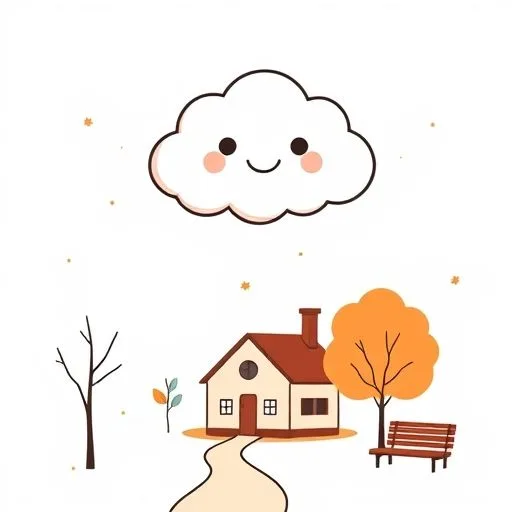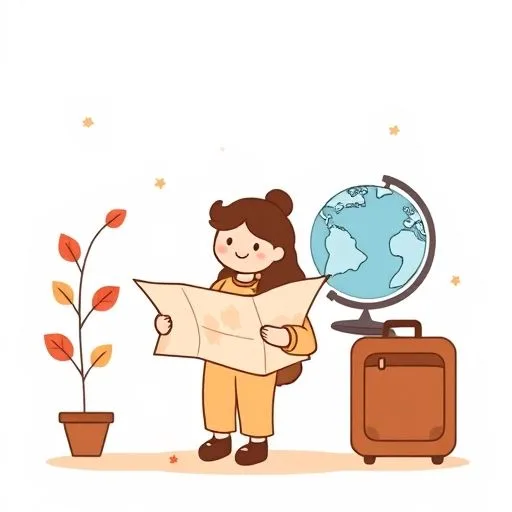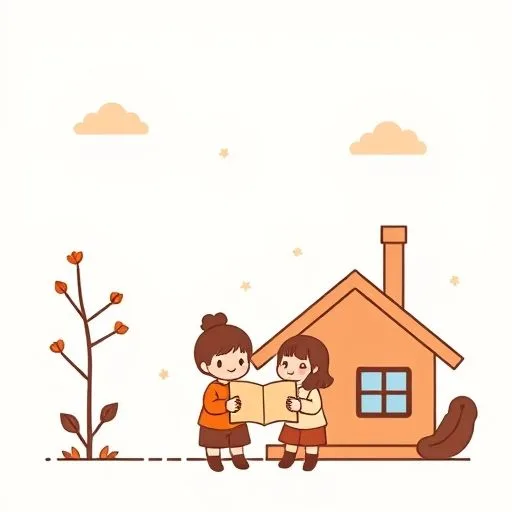
The other evening, right after school, my daughter looked up at the overcast sky on our short walk home and hit me with a classic. “Appa, if clouds are just water, why don’t they fall down all at once?” My brain, still winding down from a long day, took a moment to catch up. I gave her the simple answer, but the question lingered. But that moment got me thinking about how we can harness technology to fuel our kids’ curiosity. It’s that magical phase of childhood, isn’t it? The one where every single sentence seems to start with ‘why,’ ‘how,’ or ‘what if.’ And honestly? It’s both the most wonderful and the most exhausting part of my day! We want to be the source of all wisdom, the keeper of all fun facts. But sometimes, we’re just… tired. That’s why a piece of news I read this morning absolutely lit me up. A major study from OpenAI just revealed what people are really doing with tools like ChatGPT, and it’s not what you think. Forget just writing emails or summarizing reports. We’re turning to it for life advice, for practical guidance, for brainstorming… we’re using it as a thinking partner and family AI advisor. And for parents like us, navigating a universe of endless ‘whys’? This is an absolute GAME-CHANGER!
What Are We Really Asking AI to Do? The Surprising Shift

Let’s be real. When these AI chatbots first exploded onto the scene, the conversation was all about productivity, efficiency, and maybe a little bit of fear about our jobs. We saw it as a super-smart intern who could draft an email in seconds or a powerful calculator that could debug code. And yes, it does all that. But the new research shows something so much more human is happening.
A massive number of us are using it for what the study calls “Practical Guidance” and “Seeking Information.” We’re not just telling it what to do; we’re asking it what it thinks. We’re using it as an advisor, a tutor, a creative collaborator.
Think about it like planning a family vacation. In the past, you might use a website just to book a flight—a simple, direct task. That’s the old view of AI. But what we’re seeing now is that people are using it like a seasoned travel agent for their entire life.
The data shows a huge shift toward personal, non-work-related use, which tells me one thing loud and clear: we’re starting to see this not as a cold machine, but as a genuine partner in navigating our daily lives as a family AI advisor. And WOW, is that exciting!
How Can AI Be Your Child’s Adventure Guide?

This is where my mind just goes into overdrive with happiness! For our kids, this changes everything. My daughter’s question about the clouds is the perfect example. My first instinct was to just give her the scientific fact. But with this new mindset, we can do something so much better.
That evening, we sat down together and asked, “Can you explain why clouds float in a super fun story for a kid who just started elementary school?” Instantly, we had a tale about ‘Cloud Puffs’ being so light and full of energy that they love to dance on the wind, only coming down for a drink of water when they get really big and heavy.
The science was woven in, but it was wrapped in wonder and imagination. It was pure magic! The conversation didn’t end with a fact; it began an adventure. It sparked new questions, a drawing of dancing clouds, and a promise to go cloud-watching in the park the next day.
Why Parents Need an AI Co-Pilot for Family Life?

Okay, let’s talk about us. The parents. The pressure to be patient, wise, creative, and emotionally available all the time can be overwhelming. The study’s finding that people are using AI for decision support and advice really hit home.
It’s not about handing over the reins to a machine, but about giving ourselves a helping hand. It’s a judgment-free zone to work through the little and big challenges of family life.
We’ve all been there—stumped by a question or struggling to come up with a fun activity. Think about those moments when you’re stuck. “What are three gentle ways to explain why we have to share our toys?” or “My child is worried about a thunderstorm tonight, what’s a comforting story I can tell them?” or even, “I have 30 minutes and want to do a fun, screen-free activity with my kid that uses things we already have at home.”
Asking a machine for ideas doesn’t make you a less capable parent; it makes you a more resourceful one as a family advisor! It’s like having a friendly, endlessly patient neighbor who has read every parenting book ever written and is always available for a chat.
AI & Family: Building Connection, Not Just Automation?

I get it. There’s a lingering fear that all this technology will create distance between us, that it will automate the very human parts of life. But this research points in the complete opposite direction, and it fills me with so much hope!
When we use AI to co-create a bedtime story, to plan a weekend hike, or to find the right words to soothe a child’s fears, we are using technology for its highest purpose: to deepen human connection.
The tool itself isn’t the point. A map isn’t the adventure. A cookbook isn’t the shared family meal. They are simply guides that help us get to the good stuff.
In the same way, this technology isn’t about replacing human connection, but enhancing it. The true magic happens when we turn the AI’s suggestion into a shared laugh, a walk in the park, or a comforting hug. We are the first generation of parents raising kids who will see this as a normal part of their world. Our job isn’t to shield them from it, but to show them how to use it with wisdom, creativity, and heart, just like we do with any other tool.
By embracing it as our family’s ‘Chief Curiosity Officer,’ we’re not just finding better answers; we’re building a family culture of wonder, exploration, and most importantly, of doing it all together. And that, my friends, is something to be truly excited about!
Source: What Has ChatGPT Become?, New York Magazine, 2025-09-16
